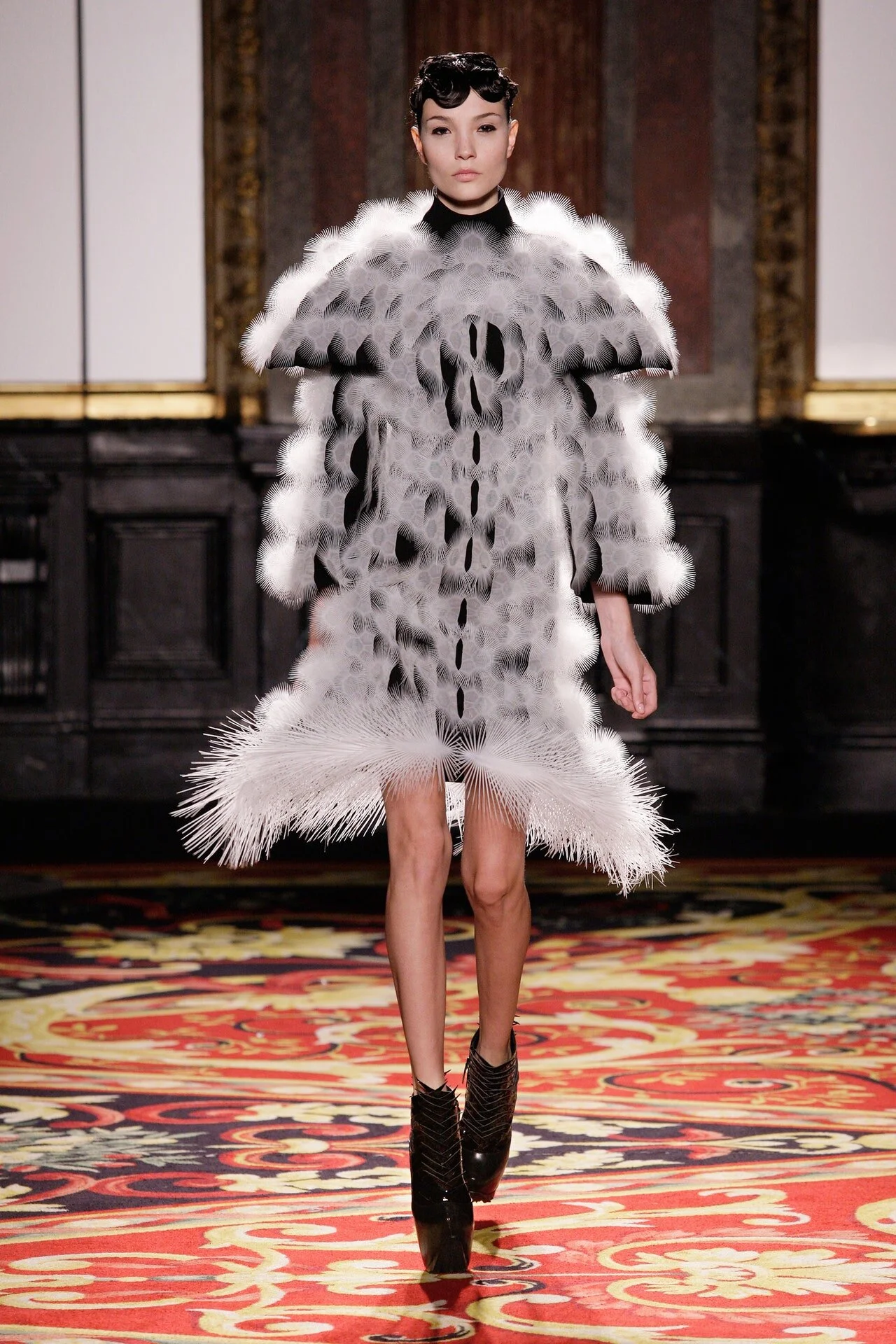TECH-STYLE
The bridge between Technology and Fashion
Back in 2010, technology and fashion seemed like two worlds apart. Couture meant clothing had to be made my hand and owning pieces confectioned with natural fabrics was the equivalent to purchasing luxury. There were few designers who had incorporated technology into their collections and their pieces were not exactly wearable. I remember being mesmerised by Hussein Chalayan’s mechanical dresses and Alexander McQueen’s runway shows were always something to look forward to. But it always felt as if technology was being used as a statement in fashion rather than as something that could actually function as clothing.
It is crazy to realize that in only 10 years that bridge that separated one from the other seems to have disappeared. In todays world fashion cannot longer exist as it used to, there is a constant need for innovation and so technology and fashion evolved so they could function as one. From the way textiles are made, to the elements incorporated into items of clothing, to the fact that they are actually wearable. Even the way that technology is used to introduce a new collection to is now more than just a statement, it is a reality from the world we are living in.
Below some of our favorite moments from the past 10 years where technology and fashion acted as one.
2010
With his most famous collection - Plato’s Atlantis - Alexander McQueen became the first designer to live-stream a show online. He opened up what was once an industry-exclusive experience to the general public and with this he created the most dramatic revolution in twenty-first-century fashion.
2013
On June 14th on 2010 at Paris Fashion Week, Irvis van Herpen introduced for the first time ever a 3D sweater. However, it was not until 2013 that she presented a full collection of 3D printed dresses that could actually be worn. 3D printing has become Irvis van Herpen’s brand dna, but it also became a trend that would be followed by other designers and an innovation that would redefine how clothing items can be manufactured.
2014
Fashion designer Ying Gao fabricated the Two Gaze-activated dresses, made of photo-luminescent thread and imbedded eye-tracking technology. These dresses light up when someone stares at them. Ying Gao is still using technology to create clothing that can respond to both, the wearer and the environment.
2015
Pauline van Dongen is a Dutch fashion designer that specializes in developing wearable technology. In 2015 she launched solar power garments as everyday wear. This pieces of clothing can charge a smartphone or any other USB compatible, portable device. Currently Pauline, is collaborating with several brands to help them incorporate technology into their fabrics.
2018
Oliver Rousteing is the man responsible for the Instagram-selfie filter obsession. To complement his Social Media inspired Fall 2018 collection, Rousteing designed his own Snapchat filter, something he refers to as "the world's first digital accessory". The filter that makes user's faces sparkle with flawless skin, bright doe eyes, glossy lips and camera-ready lighting, all under a subtle neon glow.
2020
In the midst of the pandemic, brands canceled shows and shifted their strategies to showcase their collections virtually. Despite the many jaw-dropping shows, it was Congolese designer and Hanifa founder, Anifa Mvuemba, who stole the show. She debuted her latest collection Pink Label Congo via 3D renderings over invisible bodies through Instagram Live.



